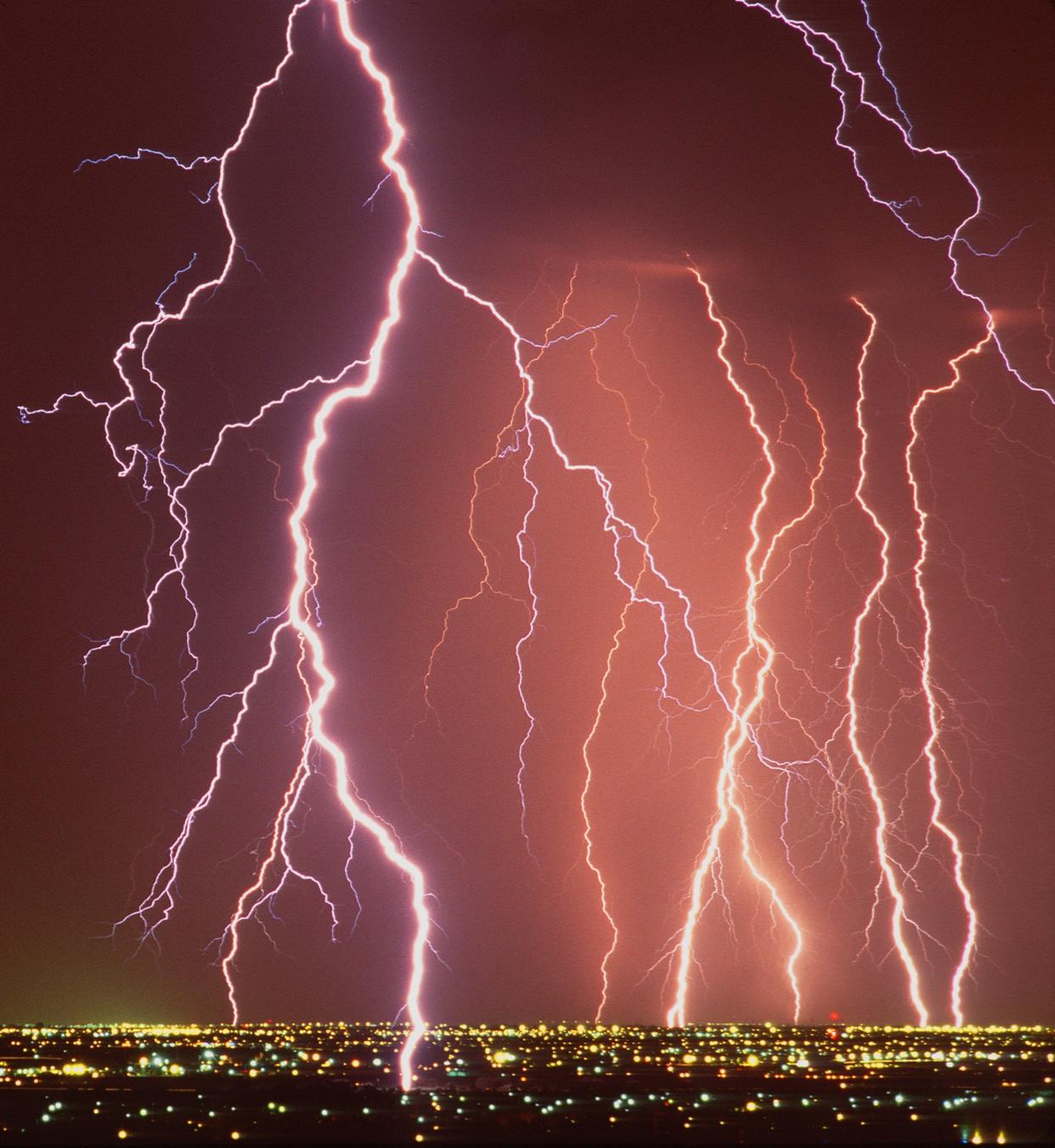Are dry thunderstorms more frequent in Arizona than other regions? Here's what to know

If you've ever heard thunder, seen lightning and rushed to your window to look outside, only to find no rain, you might be experiencing the phenomenon that is a dry thunderstorm.
Dry thunderstorms produce thunder and lightning, but they produce little to no rain at the surface, according to meteorologists.
Jessica Leffel, a meteorologist at the National Weather Service in Phoenix, said the city is experiencing the second driest year since 1972, according to the weather service's precipitation marker at Phoenix Sky Harbor International Airport.
There have been 147 consecutive days without measurable rainfall at Sky Harbor this year, which comes in second to the 160-day record that was set in 1972.
Here's everything you need to know about dry thunderstorms and how they are impacting the Phoenix area during the monsoon.
What are dry thunderstorms?
Thunderstorms that produce little to no rain can be considered dry. They are common in parts of the Western United States, such as Arizona, where temperatures are very high.
What causes dry thunderstorms?
Dry thunderstorms occur when heat and temperature gather below the cloud cover. It may rain, but due to the heat, the precipitation doesn't hit the ground, a condition which is called virga.
Leffel said dry thunderstorms, also called dry microbursts, occur "whenever we don't have sufficient enough moisture in the atmosphere to pull from to create a precipitation event."
Are dry thunderstorms dangerous?
Dry thunderstorms are a large cause of wildfires as these storms may still produce lightning. When lightning strikes without rain nearby, it is called dry lightning, and it may cause wildfires to erupt easily as the vegetation on the ground is easily ignitable due to dry conditions.
Dry thunderstorms may be more likely to cause dust storms, according to ThoughtCo. When rain evaporates as it nears the ground level, the air begins to cool. Cooler air is heavier and comes down quickly to Earth, which can create strong winds. The winds can kick up dust and other debris in arid regions, which results in sand and dust storms.
Leffel said drier storms tend to create wind events, which can pick up dust.
How common are dry thunderstorms in Arizona?
Leffel said dry thunderstorms are pretty common in the Phoenix area due to the dry climate, and because Phoenix is in the desert Southwest, it is more prone to receiving them than other areas.
Leffel said throughout the current monsoon, Phoenix has seen quite a few drier storm events and hasn't had to worry about heavy rain or flood warnings this season as much as it has in the past.
"Because we haven't had that moisture, we've been able to see more of those wind events with more of those drier thunderstorms and really frequent lightning," Leffel said, "but without that associated precipitation that we would usually put alongside a thunderstorm."
Can we expect to see a lot of dry thunderstorms?
Though Phoenix is prone to dry thunderstorms, Leffel said the Phoenix area does receive wet thunderstorms as well. It just depends on what the overall conditions are looking like for that time of year in terms of precipitation and monsoons.
"As you can see with some of the smaller events we have had throughout this monsoon, we have had more dust storms and things of that nature than we have had heavy rainfall with flooding and things like that," Leffel said.
When can we expect to see a wet thunderstorm?
There is a high chance of rain this weekend due to Hurricane Hilary moving up the Baja California coast.
According to the weather service, there are increased chances of rain throughout the weekend, which may result in heavy rainfall and flash flooding.
The weather service has forecast a 70% chance of rain on Friday night with a 50% to 60% chance of storms for the rest of the weekend.
More rain may be coming: Hurricane Hilary forecast to reach Arizona; 'significant' rainfall possible
This article originally appeared on Arizona Republic: Are dry thunderstorms more frequent in Arizona? Here's what to know

